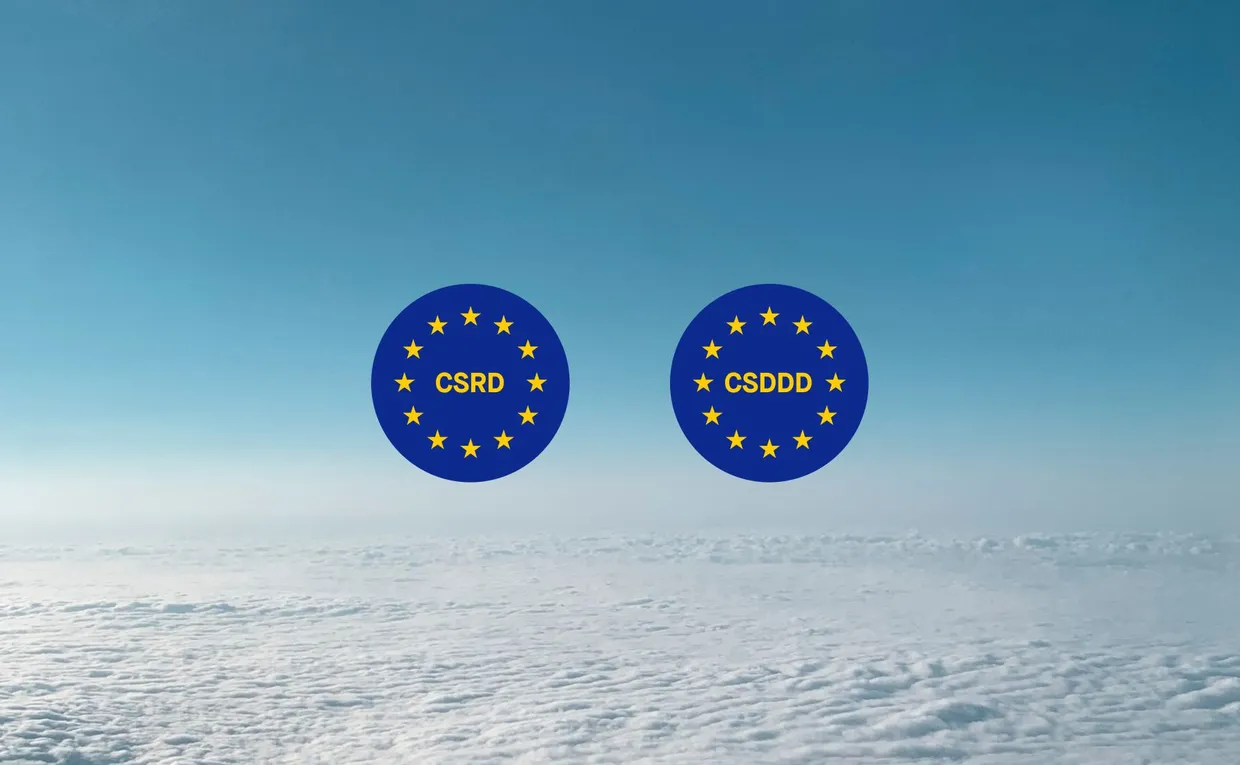Congratulations on your new role! As a Chief Sustainability Officer (CSO) or sustainability leader in your organization, you’re a key member of the Climate Suite. You’re the conductor, the guru, and the architect of climate action. Your first 100 days in post are crucial for setting the foundation of sustainability transformation and charting a course for success. In this blog post, we’ll guide you through key actions, strategies, resources and support tools to maximize your effectiveness.
1. Assess the status quo and find quick wins
Begin by conducting a comprehensive assessment of your organization’s current sustainability practices, taking into account not only environmental issues but also the broader framework of Environmental, Social, and Governance (ESG) considerations. This assessment should encompass the planet, people, society, and governance aspects as outlined by the Sustainable Development Goals (SDGs).
Review existing policies, programs, and initiatives to evaluate their effectiveness in addressing these ESG dimensions and driving tangible impact. Identify gaps and areas for improvement that align with the SDGs and truly matter to your organization and stakeholders. Engage with key stakeholders across various company departments to understand their perspectives and gather insights on ESG priorities. This assessment will provide a holistic view of your organization’s sustainability performance, serving as a baseline for future planning and enabling you to identify actionable areas where you can make a meaningful and comprehensive impact, avoiding superficial efforts.
2. Establish a clear vision and strategy
Developing a clear vision and strategy is fundamental to your role as a sustainability leader. Collaborate with executive leadership to align sustainability goals with the overall business strategy, considering both short-term and long-term objectives. Define key sustainability priorities and goals that are both ambitious and achievable in the short, interim, and long term. Ensure your vision is aligned with global sustainability frameworks, such as the United Nations SDGs, to drive broader impact.
Establish a roadmap with specific targets and milestones, along with a timeline for implementation. Remember that short-term actions are the catalysts that propel the company towards the realization of its long-term aspirations.
3. Develop a robust reporting framework
Transparency and accountability are essential for effective and responsible sustainability management. Establish a robust reporting framework to track and communicate your organization’s sustainability performance.
Identify relevant metrics and key performance indicators (KPIs) aligned with your sustainability goals. Implement a data collection and management system to gather accurate and reliable sustainability data. Use recognized reporting frameworks, such as the Global Reporting Initiative (GRI) or Sustainability Accounting Standards Board (SASB), to ensure consistency and comparability in reporting. Regularly publish sustainability reports to demonstrate progress, engage stakeholders, and inspire trust.
4. Get the right digital support
When it comes to measuring your company’s climate impact and taking meaningful action, partnering with a carbon and ESG software support provider or consultant can be invaluable. Your first step in this journey is to create a Request for Proposal (RFP) that outlines your specific needs and goals. Writing an effective climate RFP can be a challenging task, as it requires careful consideration of your company’s unique circumstances and objectives.
Sweep’s RFP Guide can help. It is designed to help you navigate the process of writing a climate RFP, including the key criteria that you need to consider, a list of the top questions that you should be asking, and the types of answers that you might expect.
5. Work on your internal governance structure
Successfully implementing sustainability efforts requires collaboration, stakeholder management, and the ability to convince and rally diverse lead team members with varying key performance indicators (KPIs). Your role becomes crucial in disseminating knowledge and aligning the organization’s actions with sustainability goals. Training employees at all levels is essential to ensure a comprehensive understanding of sustainability and its significance.
In addition to communicating the “why” behind sustainability and linking it to the organization’s mission, it is necessary to engage the Executive Committee to secure their support and involvement in driving sustainability initiatives. Encourage feedback, ideas, and active participation from employees to foster ownership and commitment. To promote collaboration across departments, establish cross-functional sustainability teams or working groups. By addressing stakeholder concerns, convincing lead team members with different KPIs, and training employees comprehensively, you can foster a culture of sustainability that permeates throughout the entire organization.
6. Enhance your external governance
Forge valuable relationships with external stakeholders across your value chain to strengthen your organization’s sustainability efforts and reap the benefits of knowledge sharing and experience exchange (REX). Engage with customers, suppliers, investors, NGOs, and industry peers to understand their expectations and collaborate on shared sustainability goals. By actively participating in industry associations, sustainability networks, and initiatives, you can stay informed about best practices and emerging trends, further enhancing your organization’s sustainability approach. Building strong external partnerships not only enhances your organization’s credibility but also expands its influence, allowing for collective action towards a sustainable future while benefiting from the valuable insights gained through REX.
To find out more about the importance of effective governance (both internal and external), read our white paper.
7. Monitor your compliance and track progress
The rise of ESG disclosure regulations, such as the SFDR and CSRD, means that organizations like yours will need to ensure that their climate data is accurate and reliable.
That way you’ll be able to confidently drive ESG compliance across your business and value chain, avoid ‘greenwashing’ and stand head and shoulders above the competition. Make sure that you understand which regulations are relevant to your sector and jurisdiction.
Lost in regulation? Our handy guide can help you get to grips with what you need to know.
Remember that this is just the beginning
In your first 100 days as a CSO or sustainability leader, it is crucial to lay the foundation for meaningful impact. By focusing on key areas such as understanding the organization’s current sustainability strategy, building relationships with stakeholders, assessing the organization’s carbon footprint, and deepening colleagues and executives’ sustainability knowledge, you can set the stage for a successful sustainability journey.
Find out more about how Sweep can help you stay on top of your ESG requirements and track progress towards compliance.



